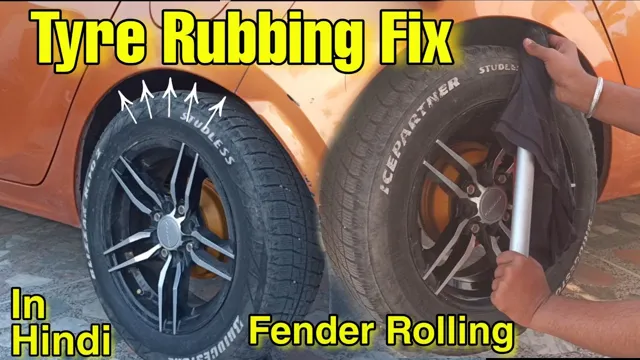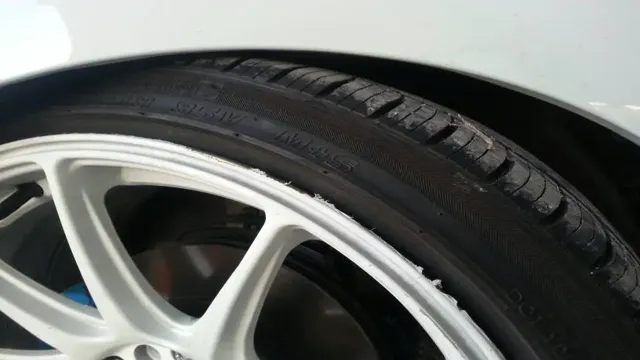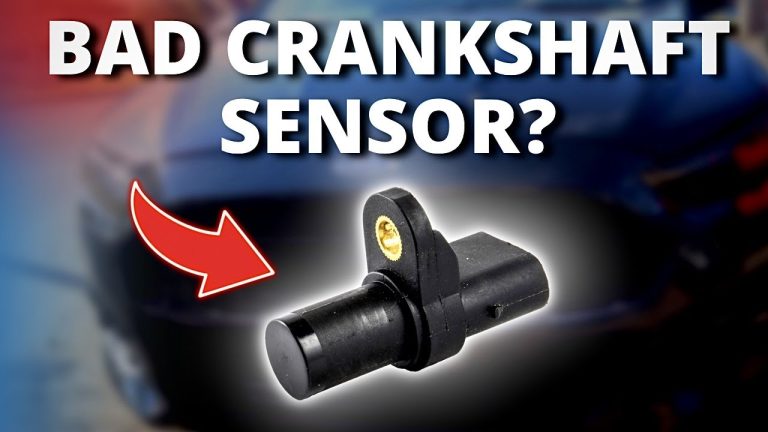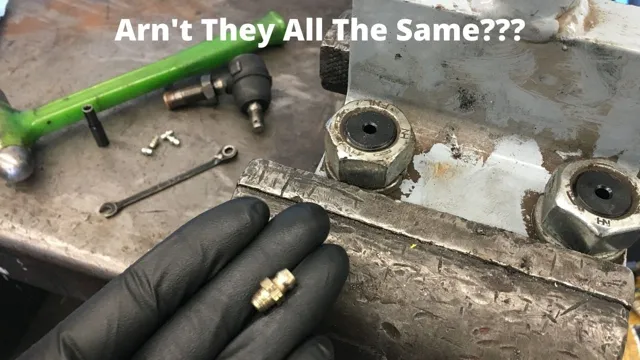Say Goodbye to Tire Rubbing: Easy Fixes to Solve Fender Rubbing Issues
Are you tired of hearing your tires rub against your vehicle’s fender? It’s not only frustrating, but it can also cause damage to your car. Luckily, fixing this issue doesn’t have to be a daunting task. In this definitive guide, we will walk you through the steps to fix tire rubbing on your fender.
Imagine driving down the road with a car that feels like it’s fighting against itself. The rubbing sound is enough to drive anyone crazy. You may also notice that your tires have become worn down unevenly and quickly.
These scenarios are all tell-tale signs that it’s time to fix the tire rubbing issue on your fender. The first step is to identify where the tire is rubbing against the fender. This can typically be found by looking for any areas with signs of wear and tear.
Once you have identified the problem area, you can determine what adjustments need to be made. This may involve adjusting the ride height, rolling the fender, or even adding wheel spacers. Making these changes to your car may seem daunting, but it’s important to prioritize safety.
Tire rubbing can cause serious issues on the road, especially at higher speeds. Learning how to fix this issue yourself can save you both time and money in the long run. Plus, you’ll gain valuable knowledge and skills that can be applied in the future.
In conclusion, fixing tire rubbing on your car’s fender is crucial for safe and smooth driving. By carefully following the steps in this definitive guide, you’ll be able to diagnose and fix the issue with ease. Don’t let tire rubbing put a damper on your driving experience – take matters into your own hands and get back on the road with a well-functioning car.
Identify the Problem
Have you ever experienced the annoying sound and sensation of your tire rubbing against your fender? It’s a common issue among car owners that can lead to further damage if not addressed immediately. One possible reason could be worn-out or incorrect-sized tires that are too big for your vehicle. Another reason could be a misaligned suspension or bent wheel causing the tire to move out of its proper position.
To fix the problem, you need to identify the root cause by inspecting your tires and suspension system. If the tires are the issue, replace them with the correct size and type, and make sure they are properly inflated. If it is a suspension issue, you may need to visit a mechanic to get it fixed.
Don’t ignore the problem as it could lead to more severe damage to your vehicle and compromise your safety on the road.
Examining the Fender and Tires
After inspecting your vehicle, you notice the fender and tires have seen better days, but identifying the exact problem is crucial. If the tires have uneven wear or are bald, it may be time for a new set. Uneven wear can lead to balance issues and potentially dangerous driving conditions.
If your fender is dented or damaged, it can affect the aerodynamics of your car, causing drag and poor fuel efficiency. Additionally, a cracked fender can be a safety hazard if it were to detach while driving. Don’t ignore these issues as they can lead to costly repairs or even more severe consequences on the road.
By identifying the problem and taking prompt action, you can ensure the longevity and safety of your vehicle.

Determining the Cause of the Rubbing
When you feel a rubbing sensation while driving, it’s essential to identify the problem that’s causing it before it leads to more significant issues. The first step towards fixing the problem is to determine the source. There are many potential reasons why your vehicle could be making an unpleasant sound while driving.
Some of the most common include worn brake pads, suspension issues, or problems with the wheels and tires. Other possible culprits include damaged components, misaligned wheels, or loose parts. To get to the root of the issue, carefully inspect your vehicle and look for any signs of wear or damage.
If you’re unsure of what’s causing the issue, take your car to a mechanic who can diagnose and repair the problem. By taking action quickly and identifying the source of the rubbing sensation, you can save yourself from some serious driving hazards and expensive repairs down the road.
Solutions
If you’ve noticed your tire rubbing against your fender, it’s important to address the issue as soon as possible to prevent further damage. One way to fix tire rubbing on fender is to adjust the suspension system. If the suspension is lowered too much, it can cause the tire to rub against the fender.
You can also check the tire size and make sure it matches the specifications recommended by the manufacturer. Installing wheel spacers can also help create more clearance between the tire and fender. Finally, check for any damaged parts such as broken springs or control arms that may be causing the rubbing.
By taking these steps, you can prevent any potential safety hazards and prolong the life of your tires and fender.
Adjusting the Suspension
“Suspension Adjustments” When it comes to adjusting the suspension on your vehicle, there are several solutions available. One option is to upgrade the shocks and struts for a smoother ride and better handling. Another solution is to adjust the ride height, which can improve the vehicle’s performance and appearance.
If your suspension system is worn or damaged, replacing parts such as ball joints, control arms, and bushings can restore its functionality. Additionally, installing a sway bar can reduce body roll and improve stability around corners. It’s important to consult with a professional mechanic or do thorough research before making any adjustments to ensure they’re done properly and safely.
By making the right suspension adjustments, you can optimize your vehicle’s performance and ride quality for a more comfortable and enjoyable driving experience.
Installing Wheel Spacers
If you’re looking for a quick and easy way to enhance your vehicle’s stance and handling, installing wheel spacers may be your solution. These simple but effective devices move your wheels outwards from the hub, providing a wider stance that can improve balance, stability, and cornering performance. They can also give your vehicle a more aggressive look by pushing the wheels closer to the fender.
Installing wheel spacers is relatively straightforward and can be done at home with just a few basic tools. However, it’s important to choose the right size and type of spacer for your vehicle and to follow the manufacturer’s instructions carefully to ensure safe and secure installation. With the right wheel spacers and proper installation, you can enjoy improved handling, performance, and aesthetics on your ride.
Replacing Tires or Fenders
If you’re in the market for a new car, there are a few things to consider. Specifically, determining if you need new tires or fenders can be a tough decision. But don’t worry – there are some great solutions available to you.
First and foremost, it’s important to know how to identify if you need new tires. The most obvious sign is if the tread has worn down to the point where you can see the wear bars. Other signs include uneven wear, punctures or cracks in the sidewall, or if the tires are more than six years old.
If any of these signs apply to your tires, it’s probably time for new ones. Replacing fenders can also be a tricky issue, as it can be tough to determine if it’s necessary. Some common signs that you need new fenders include rust, dents or other damage, or if they’re just old and worn out.
If you’re unsure, it’s always best to take your car to a professional for an assessment. If you do need new tires or fenders, the good news is that there are plenty of great solutions available. You can either purchase new ones from a reputable dealer, or you can try to find used ones.
If you go the used route, just make sure to inspect them carefully before buying. Ultimately, whether you need new tires or fenders, it’s important to act quickly to avoid further damage to your car. With the right solutions and a little bit of research, you’ll be back on the road in no time!
Prevention Tips
If you notice that your tire is rubbing against your fender, don’t overlook it – this can lead to bigger issues down the road. One of the best prevention tips is to ensure that your vehicle’s suspension system is properly aligned. If your suspension is out of whack, this can cause the tire to lean or tilt, resulting in contact with the fender.
Regular inspections and maintenance checks can catch alignment problems early on and prevent issues before they occur. Another helpful tip is to pay attention to your vehicle’s weight capacity. Overloading your car or truck can put strain on the suspension system and cause rubbing.
Finally, consider upgrading to wider tires or adjusting the ride height of your vehicle, if possible. These modifications can help create more clearance between the tire and fender, reducing the risk of rubbing. Remember, catching and preventing tire rubbing early on can save you time, money, and headaches in the long run.
Maintenance and Inspection
When it comes to maintaining and inspecting your equipment, there are several prevention tips to keep in mind. First and foremost, regular maintenance is essential to ensuring your machines are running smoothly and efficiently. This includes routine checks for wear and tear, as well as replacing parts that are approaching the end of their lifespan.
It’s also a good idea to keep a log of any issues or repairs, so you can track your equipment’s performance over time. Additionally, make sure to inspect your machines thoroughly before and after use, checking for any signs of damage or malfunctioning. Finally, it’s important to keep your equipment clean and dry, as moisture and debris can cause damage over time.
By following these prevention tips, you can save yourself time and money in the long run, and ensure your equipment is always operating at its best.
Choosing the Right Tires and Wheels
When it comes to tire and wheel maintenance, prevention is key. One important aspect of prevention is selecting the right tires and wheels in the first place. You want to choose tires that are appropriate for the weather and road conditions you will be driving on.
For example, if you live in an area with harsh winter conditions, investing in winter tires can help keep you safe on slippery roads. Additionally, selecting the right size and load rating for your tires and wheels can help prevent blowouts and other damage. It’s also important to regularly inspect your tires and wheels for any signs of wear or damage, such as bulges or cracks in the tire or bent rims.
By taking the time to choose the right tires and wheels and regularly inspecting them, you can help prevent costly and potentially dangerous issues down the road.
Conclusion
In conclusion, fixing tire rubbing on your fender requires a delicate balance of mechanics and ingenuity. Whether you’re a professional or a DIY enthusiast, it’s important to analyze the root cause of the issue, utilize the proper tools and techniques, and think outside the box to find a creative solution. With a little bit of patience and a whole lot of elbow grease, you can ensure that your ride is running smoothly and looking sharp.
So, go forth and conquer your tire troubles with confidence and a dash of cleverness!
FAQs
What causes tire rubbing on the fender?
Tire rubbing on the fender can occur due to various reasons, such as a suspension or alignment issue, oversized tires, or wheel offset.
How can I prevent tire rubbing on the fender?
You can prevent tire rubbing on the fender by installing correct-sized tires and wheels, maintaining proper tire pressure, and having regular alignment and suspension checks.
What are the possible damages caused by tire rubbing on the fender?
Tire rubbing on the fender can cause damage to the tire, wheel, and fender itself. It can also negatively affect the vehicle’s handling and performance.
How can I fix tire rubbing on the fender?
The method for fixing tire rubbing on the fender depends on the root cause of the issue. It can be fixed by modifying the suspension or alignment, installing fender liners, trimming the fender, or adjusting the wheel offset. It’s best to consult a mechanic for a proper diagnosis and solution.





